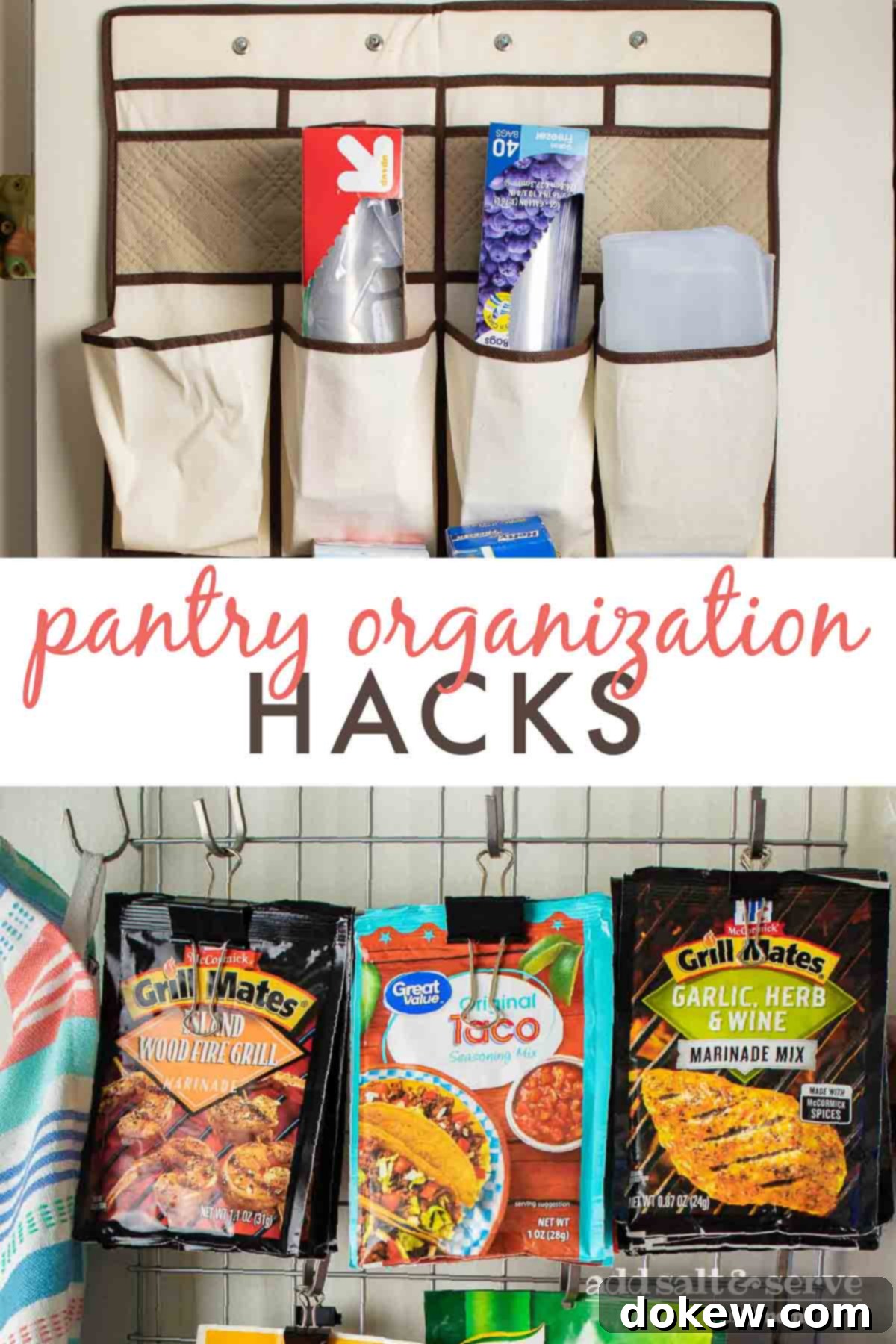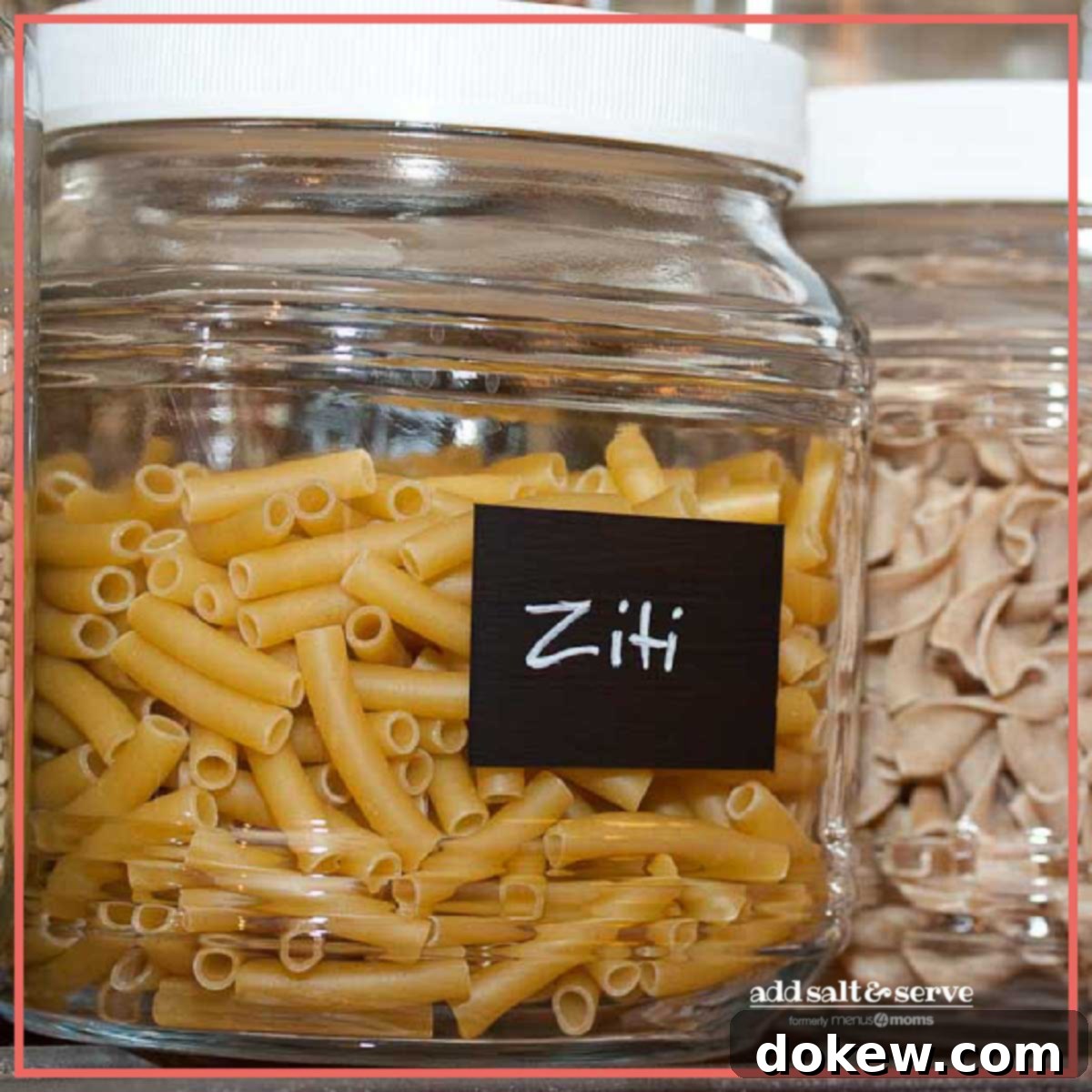Ultimate Pantry Organization Hacks: Smart Storage Solutions for a Tidy Kitchen
[feast_advanced_jump_to]
There’s something inherently satisfying about a beautifully organized pantry. The mere sight of neatly stacked jars, clearly labeled containers, and easily accessible essentials can evoke a sense of calm and efficiency in any home cook. Yet, for many of us, achieving that magazine-worthy look often feels like an impossible dream. Professional photos often showcase pantries with perfectly uniform items, a stark contrast to the diverse collection of shapes, sizes, and packaging that real-life pantries accumulate.
While my own pantry may not always be picture-perfect, I’ve developed a system that ensures I can consistently find what I need, when I need it. The goal isn’t just aesthetics; it’s about functionality, reducing waste, and making daily kitchen routines smoother. In this comprehensive guide, I’m excited to share some of my favorite, most effective pantry organization hacks that have transformed my storage space from chaotic to commendably cohesive. These aren’t just tips; they are practical, budget-friendly solutions designed to tackle common pantry challenges and help you reclaim control over your kitchen’s most vital storage area.
Unlock Vertical Space with S-Hooks & Clips for Packet Organization
One of the biggest culprits of pantry clutter is often the collection of small, floppy packets. Think gravy mixes, sauce seasonings, marinade packets, dry yeast, or even small spice refills. In the past, I used to keep these in a rectangular plastic container. While it offered a semblance of containment, it was far from ideal. Every time I needed a specific mix, I found myself rummaging, often pulling out multiple packets just to find the one I was looking for. This not only wasted time but also led to forgotten items expiring at the bottom of the bin.
Enter the remarkably versatile s-hook (affiliate link). These simple, inexpensive tools have revolutionized how I store these tricky items. If you’re fortunate enough to live near an Ikea, you can often find them in their kitchen organization section – they’re incredibly popular for a reason. For those of us who’ve moved further afield (like my journey from having an Ikea within 30 minutes to a six-plus hour drive to North Carolina), online retailers like Amazon make them readily available.
The beauty of s-hooks lies in their ability to leverage vertical space, especially if your pantry features wire shelving. For packets that come with a pre-punched hole, the solution is straightforward: simply hook them directly onto an s-hook, and then hang the s-hook from a wire shelf. This creates an immediate, visible display of your inventory, eliminating the need to dig. You can group similar items together – all your taco seasonings on one hook, all your gravy mixes on another – for even greater efficiency.
What about those packets without holes? This is where large clips become your best friend. Binder clips, bulldog clips, or even strong clothesline clips work perfectly. I use these clips to group together similar hole-less items, creating a ‘handle’ that can then be easily hung onto an s-hook. For instance, all my dry soup mixes might go into one clip, or all my small baking powder packets into another. This method not only keeps them organized but also prevents them from getting lost amongst larger items or falling off shelves. This clever system brings order to what was once a chaotic corner of the pantry, saving space and ensuring you can always see exactly what you have on hand, preventing duplicate purchases and food waste.
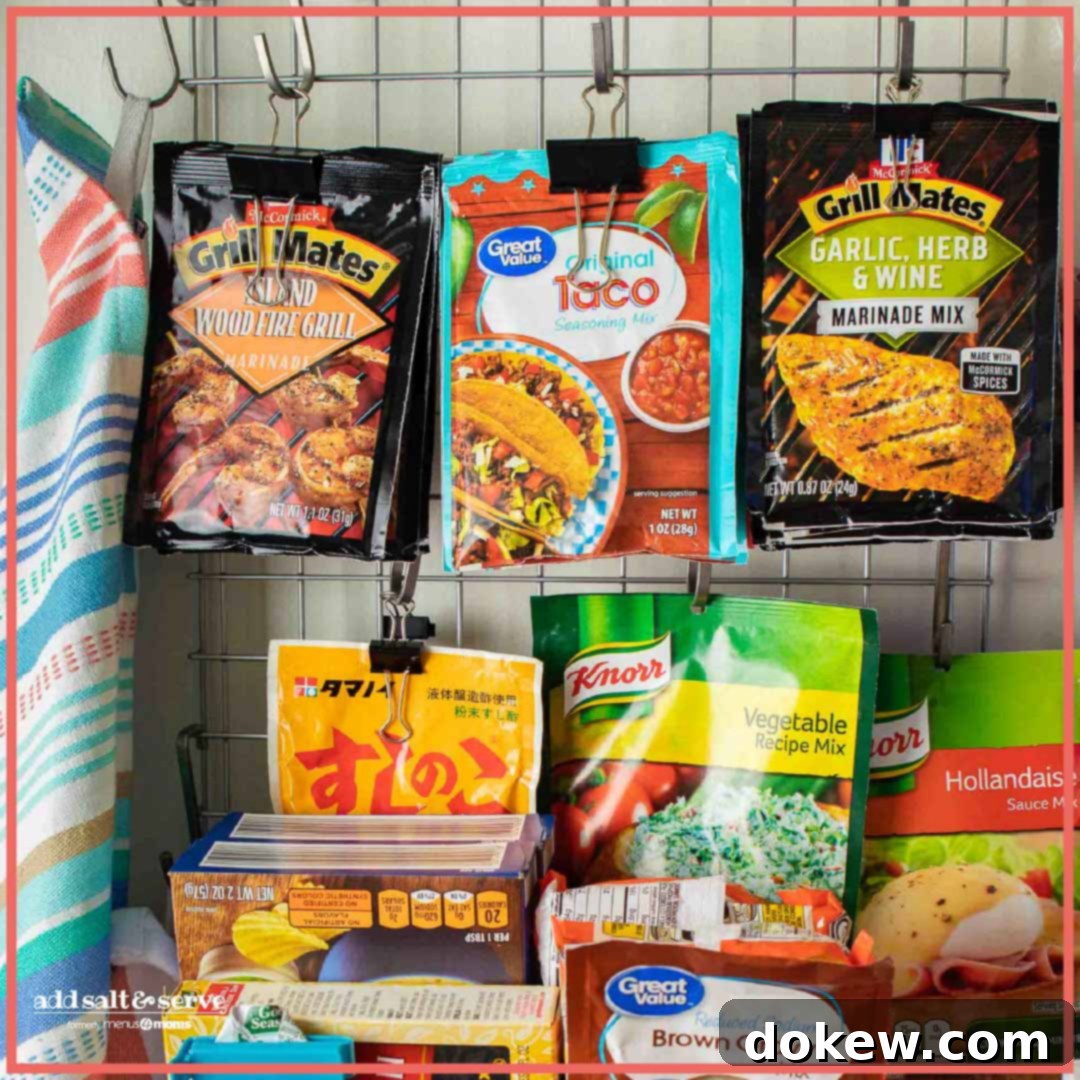
Repurpose Shoe Organizers for Smart Pantry Door Storage
Moving homes often presents new organizational challenges, and for me, it meant transitioning from a kitchen boasting abundant cabinet and drawer space to one with a slightly larger pantry but significantly less cabinet and drawer real estate. This shift forced me to think creatively about maximizing every inch, especially vertical space. The pantry door, often overlooked, became a prime candidate for innovative storage solutions. My answer? A simple, over-the-door shoe organizer.
This hack proved to be an absolute game-changer. Initially, I envisioned it primarily for storing various plastic baggies – sandwich bags, freezer bags, and gallon storage bags – which notoriously consume valuable drawer space and often end up in a jumbled mess. The individual pockets of the shoe organizer are perfectly sized for these items, allowing me to categorize them and access them with unparalleled ease. No more rummaging through a deep drawer; a quick glance at the pantry door reveals exactly which size baggie I need.
But the utility of the shoe organizer extends far beyond just baggies. I’ve found it incredibly useful for irregular-shaped food items that don’t stack well or fit neatly into bins. Think small snack pouches, individual servings of oatmeal, granola bars, or even small packets of crackers. It’s also an excellent spot for storing those awkwardly shaped reusable silicone bags. As I increasingly transition to reusable silicone bags (affiliate link) for their environmental benefits and versatility, this hack has become even more indispensable. Their floppy nature makes them difficult to store in drawers or on shelves, but tucked into the pockets of an over-the-door organizer, they are neatly contained and readily available.
When selecting a shoe organizer for your pantry, consider one with clear pockets if you want instant visibility of contents, or a fabric one if you prefer a more concealed look. Ensure it hangs securely over your pantry door and doesn’t interfere with its closing mechanism. This ingenious repurposing maximizes previously unused vertical space, keeping essentials visible, organized, and incredibly easy to access, transforming your pantry door into a highly functional storage asset.
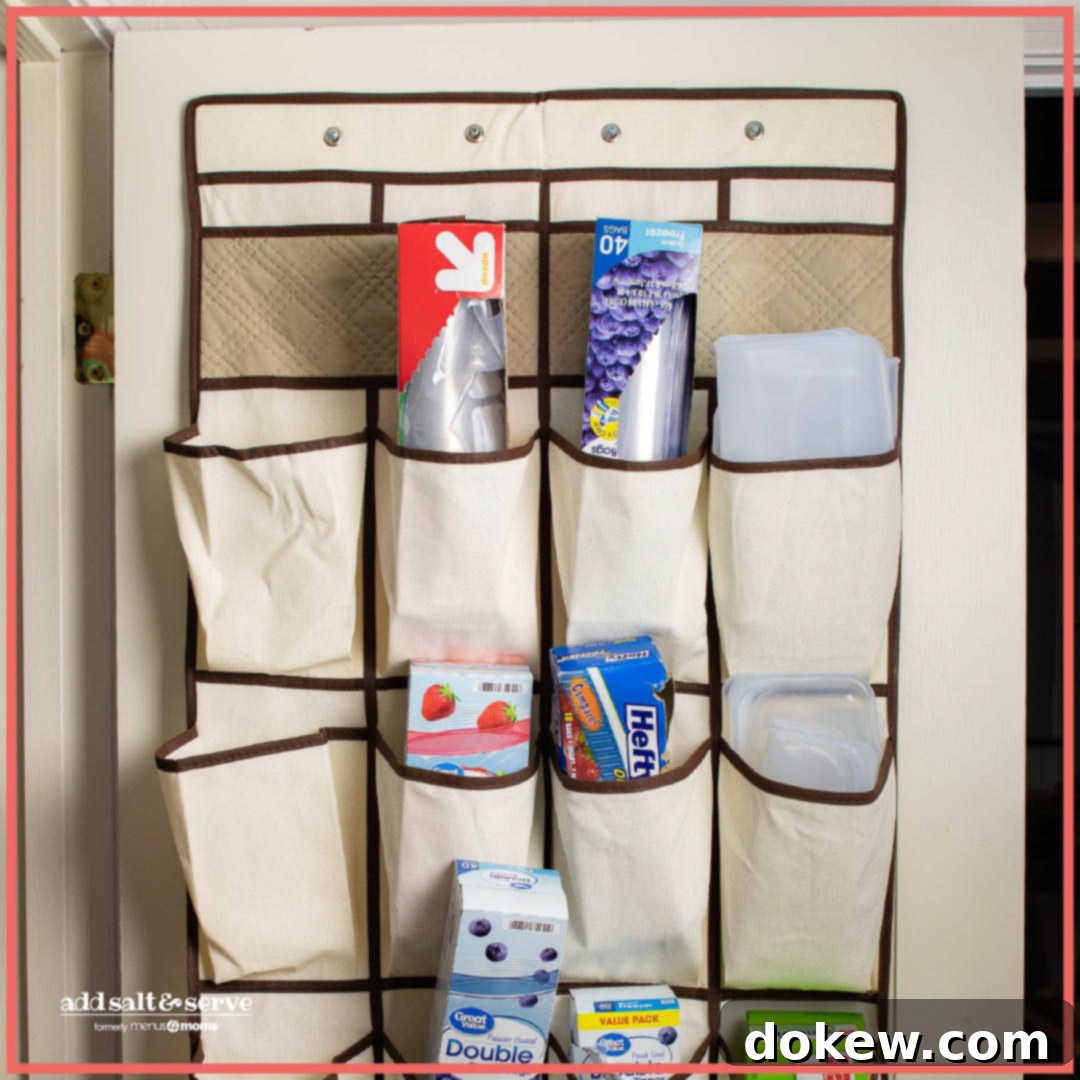
Elegant and Practical: Glass Jars with DIY Chalkboard Paint Labels
There’s an undeniable charm to glass jars, especially when they’re filled with pantry staples. In our former home, I proudly displayed them on an open kitchen shelf, where they served as both functional storage and a beautiful decorative element. They perfectly blend organization with aesthetics, creating a clean, cohesive look. However, our current kitchen is smaller, and open shelving isn’t an option, so these lovely jars have found their permanent home within the pantry, where they continue to shine as a powerful organizational tool.
Glass jars offer several significant advantages. Firstly, they provide crystal-clear visibility of their contents. No more guessing if you have enough rice or flour; a quick glance tells you everything. Secondly, they help to create a uniform look, reducing the visual clutter of mismatched packaging. This consistency makes your pantry feel calmer and more organized. Beyond aesthetics, airtight glass jars are excellent for preserving freshness and protecting dry goods from pests, extending the shelf life of your ingredients.
The challenge with storing bulk items like pasta, grains, or flours in jars is easily identifying what’s inside, especially if you have similar-looking ingredients. This is where my favorite enhancement comes in: DIY chalkboard paint labels. This easy DIY chalkboard paint label project is not only simple to execute but also incredibly practical. By applying a small section of chalkboard paint directly onto the glass, you create a customizable and reusable labeling surface. You can effortlessly write the name of the ingredient, and even add essential information like cooking times for pasta or grains, the date of purchase, or expiration dates. When the contents change, a quick wipe and re-label are all that’s needed.
These jars are ideal for a wide array of pantry items, including various types of pasta (ziti, penne, spaghetti), rice (white, brown, basmati), flours (all-purpose, bread, almond), sugars (granulated, brown), oats, lentils, coffee beans, and even snacks like pretzels or nuts. Using different sizes of jars helps accommodate varying quantities, from small spice jars to large containers for bulk flour. This system not only keeps your pantry contents meticulously organized but also adds a touch of rustic elegance, making meal prep a more streamlined and enjoyable experience. The ability to quickly identify ingredients and their associated information means less time searching and more time cooking delicious meals.
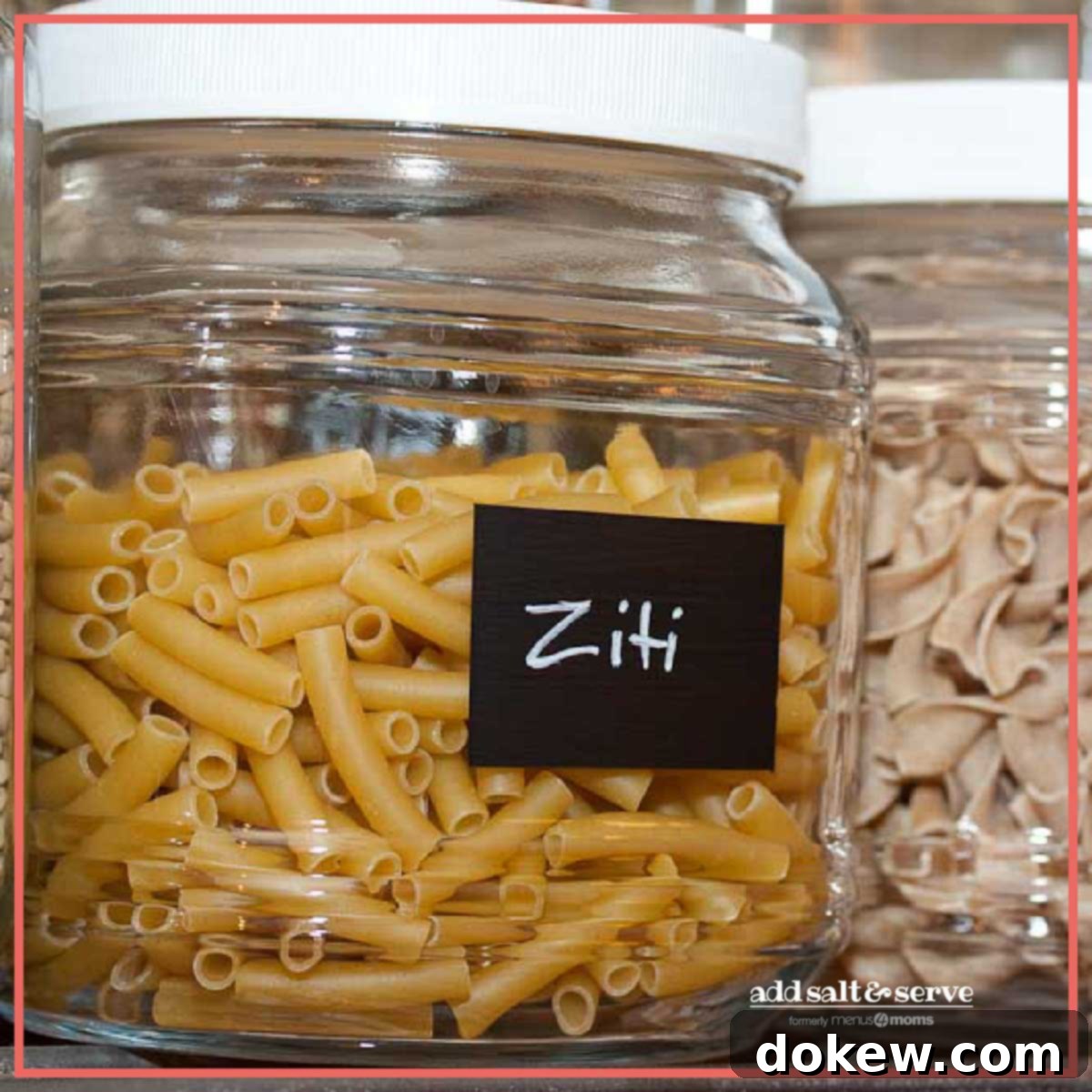
Embrace an Organized Pantry: Final Tips & Your Next Steps
Achieving an organized pantry isn’t about perfection; it’s about creating a functional, stress-free space that supports your daily cooking and healthy eating habits. The hacks shared above – utilizing S-hooks and clips for packets, repurposing shoe organizers for door storage, and employing elegant glass jars with chalkboard labels – are just a few examples of how small, clever changes can lead to significant improvements in your kitchen’s command center. These solutions are designed to address common organizational pain points, ensuring that every item has a designated home and is easily accessible.
Beyond these specific tools, maintaining an organized pantry requires a few overarching principles:
- Declutter Regularly: Before you even think about organizing, remove expired items, things you no longer use, and anything that doesn’t belong. A good declutter forms the foundation of any effective organization system.
- Group Similar Items: Keep all baking supplies together, all snacks in one zone, and all breakfast items in another. This “zoning” makes it intuitive to find what you need and put things back in their place.
- Maximize Vertical Space: Don’t just use shelves; consider stackable bins, tiered risers, and over-the-door organizers to utilize every inch from floor to ceiling.
- Use Clear Containers: While glass jars are fantastic, any clear container helps you see contents at a glance, preventing you from buying duplicates of items you already have.
- Implement “First In, First Out” (FIFO): When restocking, always place newer items behind older ones. This ensures you use older products first, reducing food waste and keeping your inventory fresh.
- Measure Before You Buy: Avoid the mistake of impulse buying organizers. Measure your pantry shelves and space carefully to ensure any new containers or systems will fit perfectly.
Remember, a functional pantry is a dynamic space that evolves with your needs. Don’t be afraid to experiment with different hacks and systems until you find what works best for your household. By implementing these strategies, you’ll not only save time and reduce stress but also minimize food waste and make your kitchen a more enjoyable place to be. We encourage you to try these ideas and share your own brilliant pantry organization tips in the comments below! What are your go-to hacks for keeping your pantry in tip-top shape?
